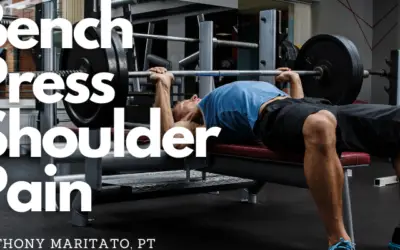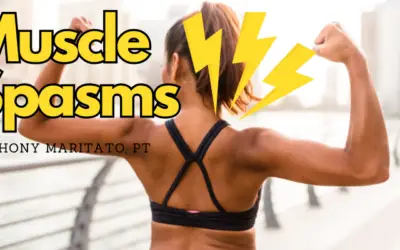Hip and Groin Pain After Total Knee Replacement Surgery
I couldn’t find peer-reviewed data to support an answer to this question, but as a physical therapist with 20 years of history in the clinic, I can tell you that anterior hip and groin pain after a total knee replacement is not uncommon.
As of writing this article on November 8, 2021 I have two patients in the clinic with anterior hip and groin pain following a total knee replacement.
Anterior Hip and Groin Pain After Total Knee Replacement
A recent YouTube comment asked:
“
Hey Tony, I had my right knee replaced on October 20, 2021. The surgeon used the muscle-sparing technique using robotics.
The problem I’m having is my right groin is killing me and hurts when I try to lift my leg. I previously had my right hip replaced in 2015. The groin has been bothering me for probably the last year or so.
I saw a surgeon in Feb of 2020 and at the time he said I had bone on bone arthritis of my right knee and would need a replacement. I thought once I had my knee replaced, the pain in my groin would go away. My current surgeon saw a current x ray of my right hip and he said everything looked fine.
I was thinking maybe something went wrong with my right artificial hip. Any suggestions as to what I should do next. Chiropractor, PT, family physician?
It’s really slowing my recovery from knee surgery. Thank you for your time. Sandy Antoinette.”

Video Response
Step 1 – Identify the structure causing the pain.
In the clinic, the first thing I would do as the evaluating physical therapist is to determine the structure I believe is causing the pain.
I would try active and passive movements to determine if I thought it was muscle or ligament.
I would vary the position of the hip during movements like hip flexion, extension, abduction, and adduction.
If I was able to eliminate the pain with positional changes I would feel more confident that it is a mechanical problem.
* Note: If the pain didn’t change with positioning I would have to ask myself if it could be a chemical problem.
Step 2 – Create a treatment plan.
After I identify the structure possibly contributing to the symptoms, I would develop a treatment plan to strengthen the tissue, facilitate normal tissue healing, ensure proper range of motion and mobility within the structure and minimize the negative effect in the surrounding tissues.
It can also help to try different assistive devices. If you want to know more about switching from a cane to a walker click here.
Step 3 – Assess progress and track improvement.
The final step is to assess progress and track improvement. If we were able to determine the pain is not causing tissue harm or damage, then we would test painful movements after each session and between sessions to determine improvement.
Often, patients will stop an activity because it hurts, but how something feels during the activity might not be as important as how it feels after the activity.
If something hurts at the time of exercise, but then feels better later that day or the next morning then it is usually a good thing to keep performing those exercises.

Anthony Maritato, PT
Physical Therapist
Anthony Maritato, PT is an Ohio licensed physical therapist and private practice owner.
Mr. Maritato specializes in helping patients who have received a total knee replacement or rotator cuff repair surgery. Ohio license #PT011602
Table of contents
Anterior Hip and Groin Pain After Knee Replacement
Video Response
Bench Press With Shoulder Pain: A Comprehensive Guide
I have been a physical therapist since 2006 and a certified strength coach since 2001. If there is one thing I have learned over the past 22 years it is that pain does not always mean danger or damage. A simple rule of thumb for guiding your decision to stop an...
Surgery Clothes: What to wear for a total knee replacement surgery
Best Surgery Clothes for Before, During, and After your Knee Surgery I have been a licensed physical therapist since 2006 and have worked with hundreds of patients who underwent total knee replacement surgery over the past 16 years. One thing nobody prepares for are...
Muscle Spasm in Shoulder
Understanding and Treating Muscle Spasms in the Shoulder Muscle spasms in the shoulder can be incredibly uncomfortable and can significantly limit your range of motion and daily activities. Whether it's a sudden, involuntary contraction or a persistent tightening of...



